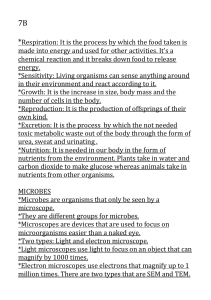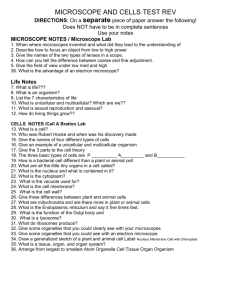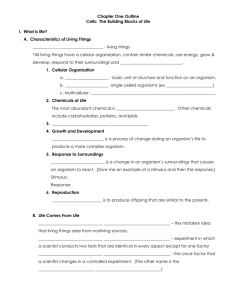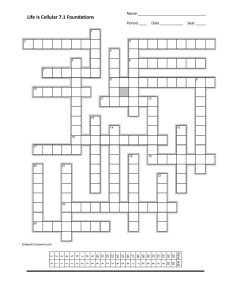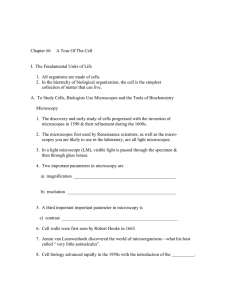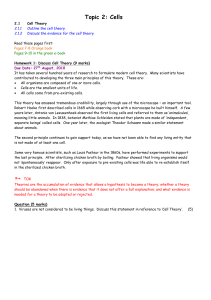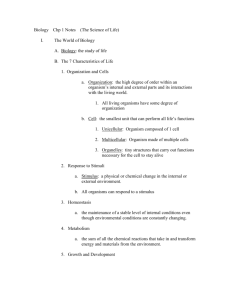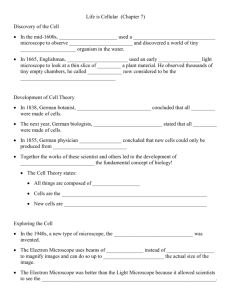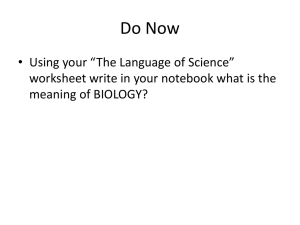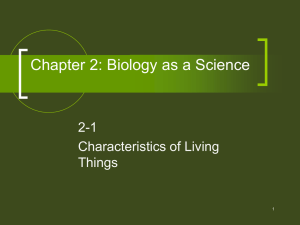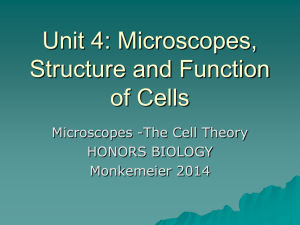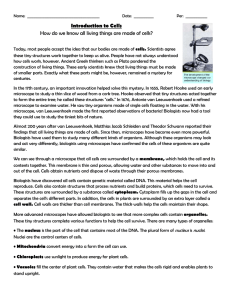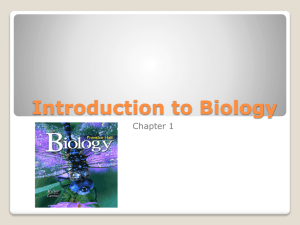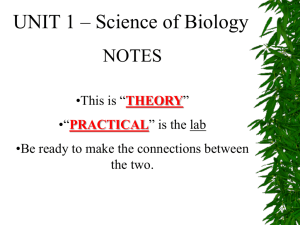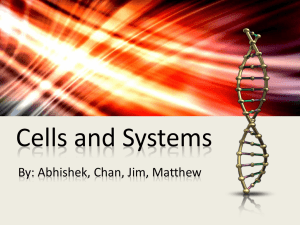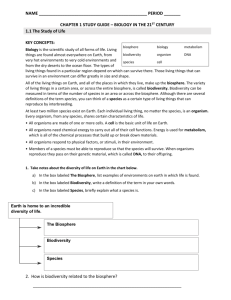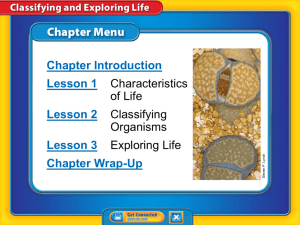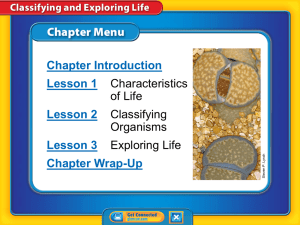Cell Theory Notes with answers
advertisement
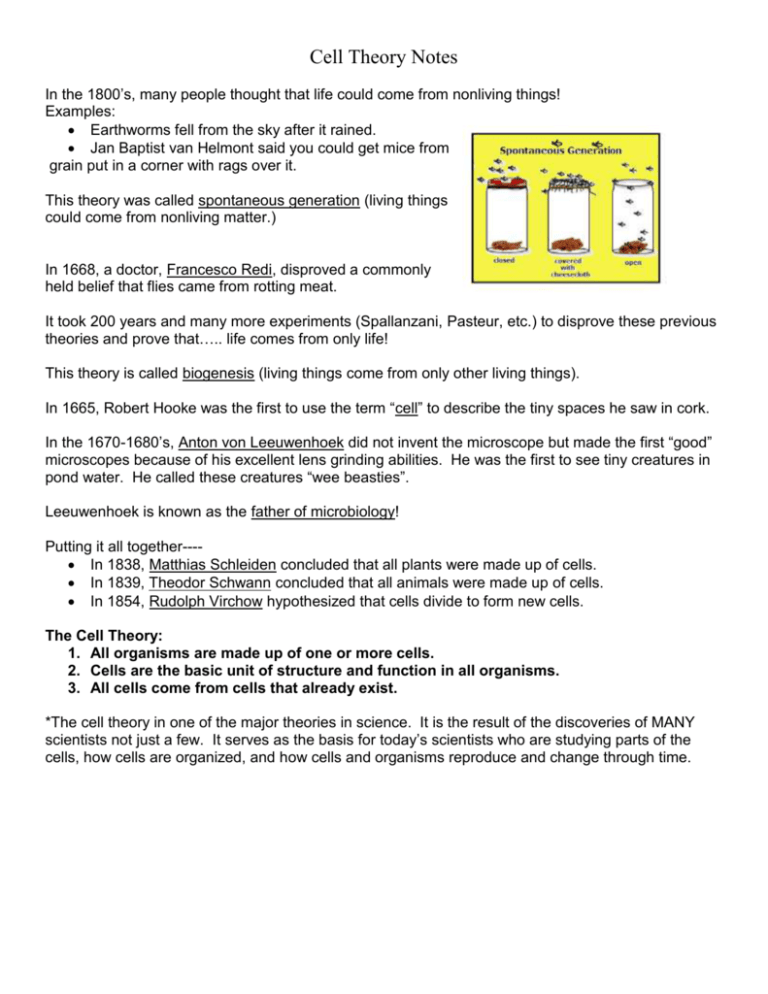
Cell Theory Notes In the 1800’s, many people thought that life could come from nonliving things! Examples: Earthworms fell from the sky after it rained. Jan Baptist van Helmont said you could get mice from grain put in a corner with rags over it. This theory was called spontaneous generation (living things could come from nonliving matter.) In 1668, a doctor, Francesco Redi, disproved a commonly held belief that flies came from rotting meat. It took 200 years and many more experiments (Spallanzani, Pasteur, etc.) to disprove these previous theories and prove that….. life comes from only life! This theory is called biogenesis (living things come from only other living things). In 1665, Robert Hooke was the first to use the term “cell” to describe the tiny spaces he saw in cork. In the 1670-1680’s, Anton von Leeuwenhoek did not invent the microscope but made the first “good” microscopes because of his excellent lens grinding abilities. He was the first to see tiny creatures in pond water. He called these creatures “wee beasties”. Leeuwenhoek is known as the father of microbiology! Putting it all together--- In 1838, Matthias Schleiden concluded that all plants were made up of cells. In 1839, Theodor Schwann concluded that all animals were made up of cells. In 1854, Rudolph Virchow hypothesized that cells divide to form new cells. The Cell Theory: 1. All organisms are made up of one or more cells. 2. Cells are the basic unit of structure and function in all organisms. 3. All cells come from cells that already exist. *The cell theory in one of the major theories in science. It is the result of the discoveries of MANY scientists not just a few. It serves as the basis for today’s scientists who are studying parts of the cells, how cells are organized, and how cells and organisms reproduce and change through time. In class we used a compound microscope, but there are different types of microscopes: 1. Simple microscopes- similar to a magnifying glass, It has only one lens. 2. Compound Light Microscope- a microscope with 2 or more lenses and was invented by Zacharias Janssen in 1590. It uses light to pass through the object and then the lenses. Today, light microscopes can magnify up to about 500x. 3. Electron Microscope- uses beams of electrons bent by magnetic fields to enlarge objects. They can magnify up to about 300,000x. There are two main kinds of electron microscopes: 1. Transmission electron microscope (TEM)- used to see great detail inside cells, ect. 2. Scanning electron microscope (SEM)- used to see a three-dimensional picture of whole objects. Levels of Organization The Cell Theory states that all organisms are made of cells. There is an order that these cells make up an organism and this order is shown below: Cells (Animal) Tissue Organ Cells make up Tissues make up Organs make up Organ System Organism Organ Systems make up An Organism! Cells (plant) Tissue (layer of a leaf) Organ (Leaf) Organ System /Organism
